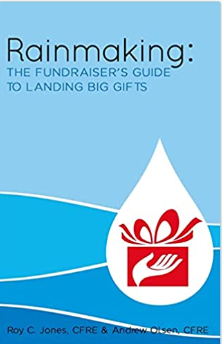A dramatic shift in fundraising is occurring nationwide. Revenues are shifting by channel. A decade ago, easily 75 percent of all revenue came from direct response. Channels like direct mail, email, and digital marketing drove two-thirds to three-quarters of all income.
Major gifts were important but only contributed 25–35 percent of the total revenue. Today, the primary revenue source has flipped. Direct mail results have flattened. Charities and nonprofits are starting to focus on more major donor programs. Large gifts have grown to 50–65 percent of the total revenue. (In some verticles like hospitals and universities it is closer to 80 to 90 percent of the total revenue.) Major gifts, corporate sponsors, and foundation grants are providing a much bigger share of the operational revenue.
That said, direct mail and email will continue to provide at least half of your revenue. Most importantly, they will remain the primary source of your major donor leads. Never forget that high-capacity donors give to charities just like they invest in the stock market. They typically make a small gift first — usually $100 or less. If they see a return on investment from their gift, they will probably add a zero to their next gift amount.
When a donor responds in this way, if you make a point of thanking them quickly and providing them with an impact report, their giving can quickly grow to $1,000-plus if they have the capacity. Major donor relationships today are best cultivated in person, not by mass marketing.
Individual meetings, small group meetings, golf events, community events, banquets, galas, and even retreats and multiday conferences are all critical parts of a development plan. What changes is your organization making to adjust to this new reality? Have you retooled your development strategy? Have you begun using segmentation to create more high-dollar direct response appeals or campaigns?
In addition to these considerations, have you prepared to make staffing adjustments? The primary challenge with this new fundraising model is it must be staffed. Key positions to consider adding to your staff include a frontline fundraiser and a donor or marketing support staff member. These investments in time, strategy and staffing can help your team identify your donors’ interests and giving potential, and then empower the staff to make an informed and strategic ask.
Successful nonprofits will make it a priority to meet with key donors, care for them, listen to their passions, identify their capacity, and present the needs of your guests, clients, and the organization.
Fit Fundraising works with nonprofits, large and small, in human services, international relief, advocacy and education. Founder Roy Jones has helped raise more than half a billion dollars over the last decade alone. Ready to elevate your fundraising efforts to new heights? Discover how Fit Fundraising can transform your results. You can reach Roy at rjones@fitfundraising.com.


